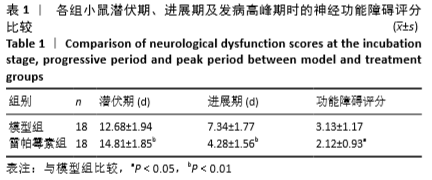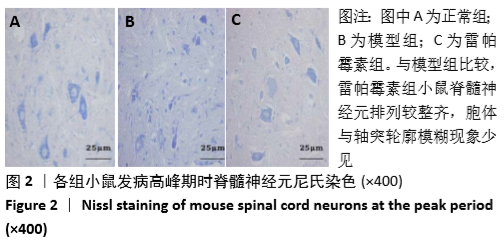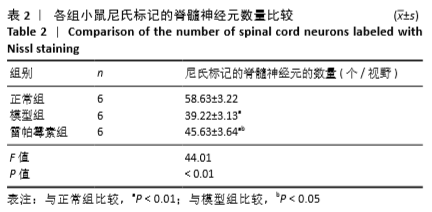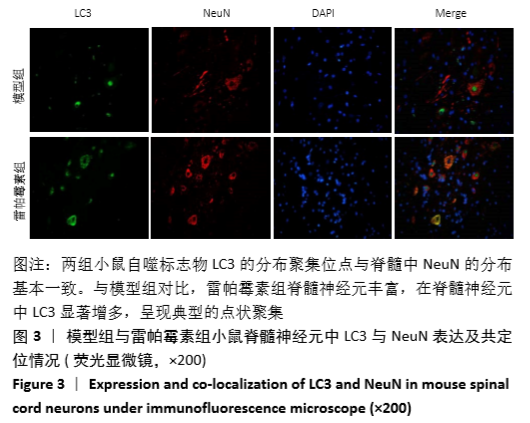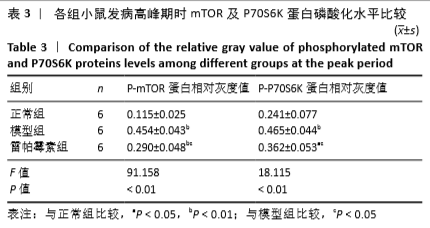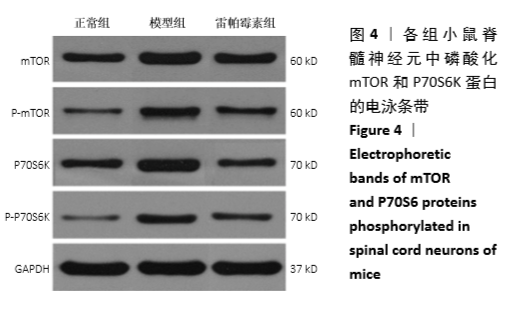[1] HUANG WJ, CHEN WW, ZHANG X. Multiple sclerosis: Pathology, diagnosis and treatments. Exp Ther Med. 2017;13(6):3163-3166.
[2] MAHAD DH, TRAPP BD, LASSMANN H. Pathological mechanisms in progressive multiple sclerosis. Lancet Neurol. 2015;14(2):183-193.
[3] 胡学强,常艳宇. 我国多发性硬化诊治现状与进展[J]. 重庆医科大学学报, 2017,42(6): 669-671.
[4] ROVARIS M, GAMBINI A, GALLO A, et al. Axonal injury in early multiple sclerosis is irreversible and independent of the short-term disease evolution. Neurology. 2005;65(10):1626-1630.
[5] KELLER CW, LÜNEMANN JD. Autophagy and Autophagy-Related Proteins in CNS Autoimmunity. Front Immunol. 2017;8:165.
[6] KOMATSU M, WAGURI S, CHIBA T, et al. Loss of autophagy in the central nervous system causes neurodegeneration in mice. Nature. 2006;441(7095):880-884.
[7] GANDHI S, ABRAMOV AY. Mechanism of oxidative stress in neurodegeneration. Oxid Med Cell Longev. 2012;2012:428010.
[8] CACCAMO A, MAJUMDER S, RICHARDSON A, et al. Molecular interplay between mammalian target of rapamycin (mTOR), amyloid-beta, and Tau: effects on cognitive impairments. J Biol Chem. 2010; 285(17):13107-13120.
[9] DELLO RUSSO C, LISI L, FEINSTEIN DL, et al. mTOR kinase, a key player in the regulation of glial functions: relevance for the therapy of multiple sclerosis. Glia. 2013;61(3):301-311.
[10] CHIANG GG, ABRAHAM RT. Phosphorylation of mammalian target of rapamycin (mTOR) at Ser-2448 is mediated by p70S6 kinase. J Biol Chem. 2005;280(27):25485-25490.
[11] PARK S, CHAPUIS N, TAMBURINI J, et al. Role of the PI3K/AKT and mTOR signaling pathways in acute myeloid leukemia. Haematologica. 2010;95(5):819-828.
[12] YU SY, LIU L, LI P, et al. Rapamycin inhibits the mTOR/p70S6K pathway and attenuates cardiac fibrosis in adriamycin-induced dilated cardiomyopathy. Thorac Cardiovasc Surg. 2013;61(3):223-228.
[13] SBRANA FV, CORTINI M, AVNET S, et al. The Role of Autophagy in the Maintenance of Stemness and Differentiation of Mesenchymal Stem Cells. Stem Cell Rev Rep. 2016;12(6):621-633.
[14] FRENZEL L, HERMINE O. Mast cells and inflammation. Joint Bone Spine. 2013;80(2):141-145.
[15] FENG X, HOU H, ZOU Y, et al. Defective autophagy is associated with neuronal injury in a mouse model of multiple sclerosis. Bosn J Basic Med Sci. 2017;17(2):95-103.
[16] KUMAR S, PATEL R, MOORE S, et al. Estrogen receptor β ligand therapy activates PI3K/Akt/mTOR signaling in oligodendrocytes and promotes remyelination in a mouse model of multiple sclerosis. Neurobiol Dis. 2013;56:131-144.
[17] NEUFELD TP. TOR-dependent control of autophagy: biting the hand that feeds. Curr Opin Cell Biol. 2010;22(2):157-168.
[18] DLCETTA D, DOMINICI R. The local mammalian target of rapamycin (mTOR) modulation: a promising strategy to counteract neurodegeneration. Neural Regen Res. 2019;14(10):1711-1712.
[19] OH JE, LEE HK. Pattern recognition receptors and autophagy. Front Immunol. 2014;5:300.
[20] MAIESE K, CHONG ZZ, SHANG YC, et al. mTOR: on target for novel therapeutic strategies in the nervous system. Trends Mol Med. 2013; 19(1):51-60.
[21] SPILMAN P, PODLUTSKAYA N, HART MJ, et al. Inhibition of mTOR by rapamycin abolishes cognitive deficits and reduces amyloid-beta levels in a mouse model of Alzheimer’s disease. PLoS One. 2010;5(4):e9979.
[22] NAKAHIRA K, HASPEL JA, RATHINAM VA, et al. Autophagy proteins regulate innate immune responses by inhibiting the release of mitochondrial DNA mediated by the NALP3 inflammasome. Nat Immunol. 2011;12(3):222-230.
[23] SEKIGUCHI A, KANNO H, OZAWA H, et al. Rapamycin promotes autophagy and reduces neural tissue damage and locomotor impairment after spinal cord injury in mice. J Neurotrauma. 2012; 29(5):946-956.
[24] RÜTHER BJ, SCHELD M, DREYMUELLER D, et al. Combination of cuprizone and experimental autoimmune encephalomyelitis to study inflammatory brain lesion formation and progression. Glia. 2017;65(12):1900-1913. |


